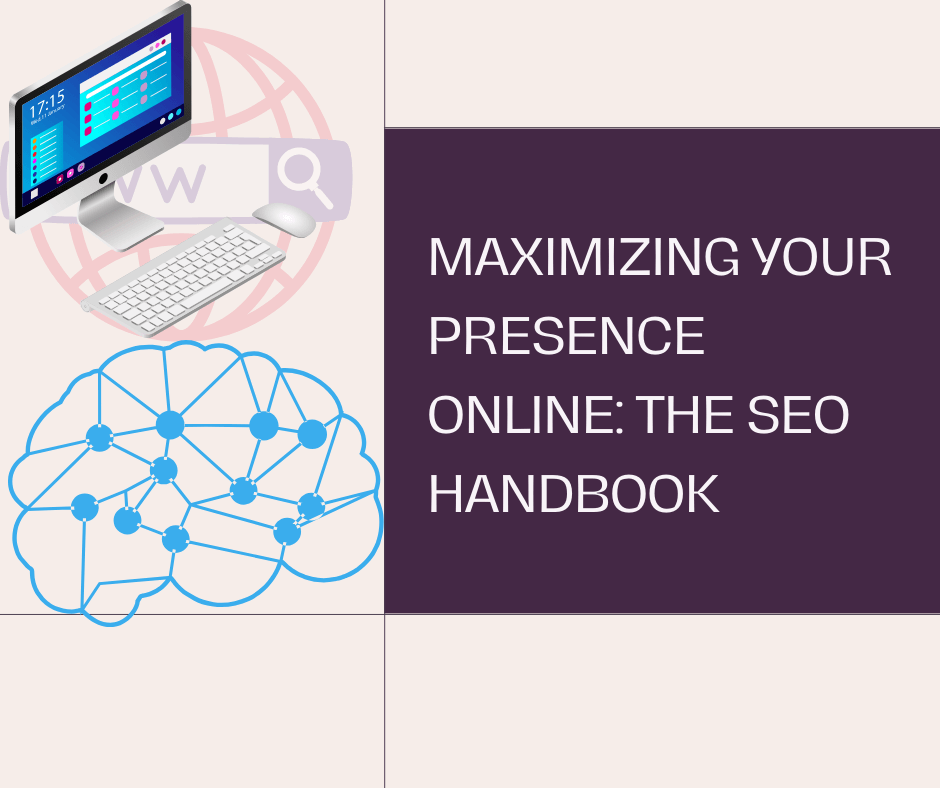Maximizing Your Presence Online: The SEO Handbook

December 13, 2023
289
Web Analysis:
Web analysis involves studying a website’s performance data to understand user behavior, traffic sources, and page effectiveness. Using tools like Google Analytics, it tracks metrics such as traffic volume, popular pages, and user demographics. This analysis helps in making informed decisions, refining user experience, and optimizing digital strategies for better website performance.
Keyword Research:
Is the process of identifying and analyzing specific words or phrases that people use when searching online. It’s a fundamental aspect of SEO and content marketing, aiming to understand user intent and preferences. By exploring keywords related to a particular industry, topic, or product, marketers can gauge search volume, competition, and relevance. This research helps in creating content that aligns with what users are searching for,
improving a website’s chances of ranking higher in search engine results and attracting relevant traffic.
On-Page Optimiztion:
Fine-tunes individual web pages to improve their visibility and relevance. It involves strategies like keyword optimization, content refinement, and enhancing user experience to boost search engine rankings and user engagement.
Technical SEO:
Technical SEO optimizes a website’s structure and functionality for better search engine crawling, indexing, and overall performance. It involves refining speed, mobile compatibility, site structure, security, and backend elements to enhance a website’s visibility and ranking potential.
Link Building:
Involves getting links from other websites to your site, signaling its credibility and relevance to search engines. It’s about acquiring quality links from reputable sources through strategies like outreach and content partnerships, aiming to boost your site’s authority and search engine visibility.
Content Strategy:
Content strategy is the blueprint for creating, managing, and distributing content that aligns with business goals and audience needs. It involves planning, creating, optimizing, and analyzing content to ensure it resonates with the target audience and drives desired outcomes.
Local SEO:
Is the blueprint for creating, managing, and distributing content that aligns with business goals and audience needs. It involves planning, creating, optimizing, and analyzing content to ensure it resonates with the target audience and drives desired outcomes.
Monitoring and Reporting:
Involve tracking key data to evaluate performance and progress. It’s about observing metrics like website traffic and engagement, then summarizing findings to make informed decisions and optimize strategies.
Algorithm Update:
Are changes made by search engines like Google to their ranking systems. These updates affect how websites are positioned in search results. They’re aimed at improving search relevance, user experience, and combating low-quality content. Adapting SEO strategies in response to these updates helps maintain or improve website rankings.
Competitor analysis:
Competitor analysis is the assessment of rival businesses’ strategies, strengths, weaknesses, and market performance. It helps gain insights to refine and enhance your own business strategies for competitiveness..
Consultation and Education:
Consultation and education involve providing tailored guidance and knowledge in specific fields. Consultation offers recommendations or strategies, while education imparts learning and skill enhancement opportunities. Both aim to empower individuals or organizations with valuable insights to achieve their goals effectively.
Customized Strategies:
Customized strategies are personalized plans designed to meet specific needs or goals. These strategies are tailored after analyzing unique circumstances, aiming to provide targeted and effective solutions.
Recommended Posts

The Role of Schema Markup in SEO
January 31, 2025

International SEO: Strategies for Global Expansion
January 27, 2025

Advanced Link Building Strategies
January 24, 2025

